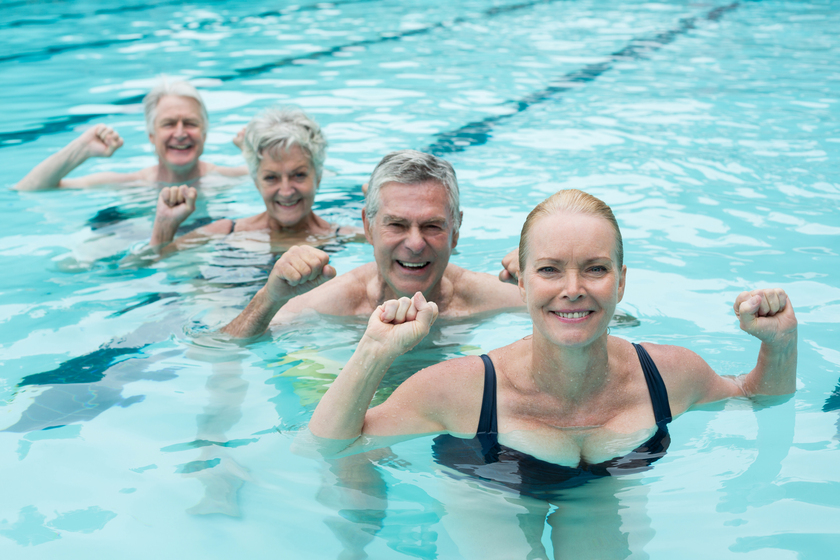Swimming is a fantastic exercise option for older adults who seek a low-impact, full-body workout that is gentle on the joints. It offers numerous physical and mental health benefits, making it an ideal choice for maintaining fitness and overall well-being. Read on for some swimming workout tips specifically tailored for older adults, providing valuable guidance to help them dive into fitness and enjoy the pool.
Consult with Healthcare Professionals
Before starting any exercise regimen, it is crucial for older adults to consult with their healthcare professionals. Physicians or physical therapists can assess individual fitness levels, provide guidance, and offer tailored advice based on personal health conditions. This consultation ensures that swimming is a safe and suitable exercise option for each individual.
Warm-Up and Stretching
Before diving into the main swimming workout, warm-up exercises and stretching are essential. Start with a few minutes of gentle swimming or water walking to gradually raise the heart rate and loosen up the muscles. Follow this with stretching exercises that target major muscle groups, including the arms, shoulders, legs, and back. Warm-up and stretching routines help prevent injuries and prepare the body for the workout ahead.
Begin with Water Walking or Water Aerobics
For older adults who are new to swimming or have mobility limitations, water walking or water aerobics provide an excellent starting point. Walking in waist-deep water or participating in water aerobics classes offers a low-impact cardiovascular workout that strengthens muscles, improves flexibility, and enhances overall endurance. These activities can gradually be incorporated into a swimming routine as fitness levels improve.
Focus on Technique and Form
Proper swimming technique and form are crucial to maximize the benefits of a swimming workout. If necessary, consider taking swimming lessons or working with a swimming instructor who specializes in teaching older adults. Learning the correct techniques for strokes such as freestyle, breaststroke, or backstroke will help improve efficiency, reduce strain on the body, and enhance the overall swimming experience.
Incorporate Interval Training
Interval training is an effective way to increase cardiovascular fitness and burn calories during a swimming workout. Alternate between periods of high-intensity effort and recovery or lighter effort. For example, swim at a moderate pace for a few laps, followed by a faster-paced lap or two. Gradually increase the intensity and duration of high-intensity intervals as fitness levels improve.
Mix Up the Strokes
To engage different muscle groups and prevent boredom, incorporate a variety of swimming strokes into the workout routine. Each stroke targets different muscles and provides unique benefits. Experiment with freestyle, breaststroke, backstroke, and butterfly, alternating between them during the workout. This variety keeps the workout fresh, challenges the body, and promotes overall strength and coordination.
Use Pool Equipment
Pool equipment such as kickboards, pool noodles, or flotation belts can add variety and resistance to a swimming workout. These tools can help target specific muscle groups, provide support during exercises, and increase the intensity of the workout. Consult with a swimming instructor or fitness professional to learn how to incorporate pool equipment effectively into the routine.
Monitor Breathing
Proper breathing technique is vital while swimming. Practice rhythmic breathing, inhaling through the mouth and exhaling through the nose or mouth during the stroke. Coordination of breathing with stroke movements helps maintain oxygen flow, enhances endurance, and promotes relaxation while swimming.
Stay Hydrated
Even though swimming takes place in the water, it is essential to stay hydrated before, during, and after a swimming workout. Drink water before entering the pool and take regular water breaks to prevent dehydration. Pay attention to signs of thirst and drink fluids as needed to maintain proper hydration levels.
Enjoy the Experience
Above all, swimming should be enjoyable. Embrace the freedom of movement, the weightlessness in the water, and the sense of relaxation it provides. Make swimming a part of a healthy and balanced lifestyle, not just for its physical benefits but also for the mental and emotional well-being it promotes.








